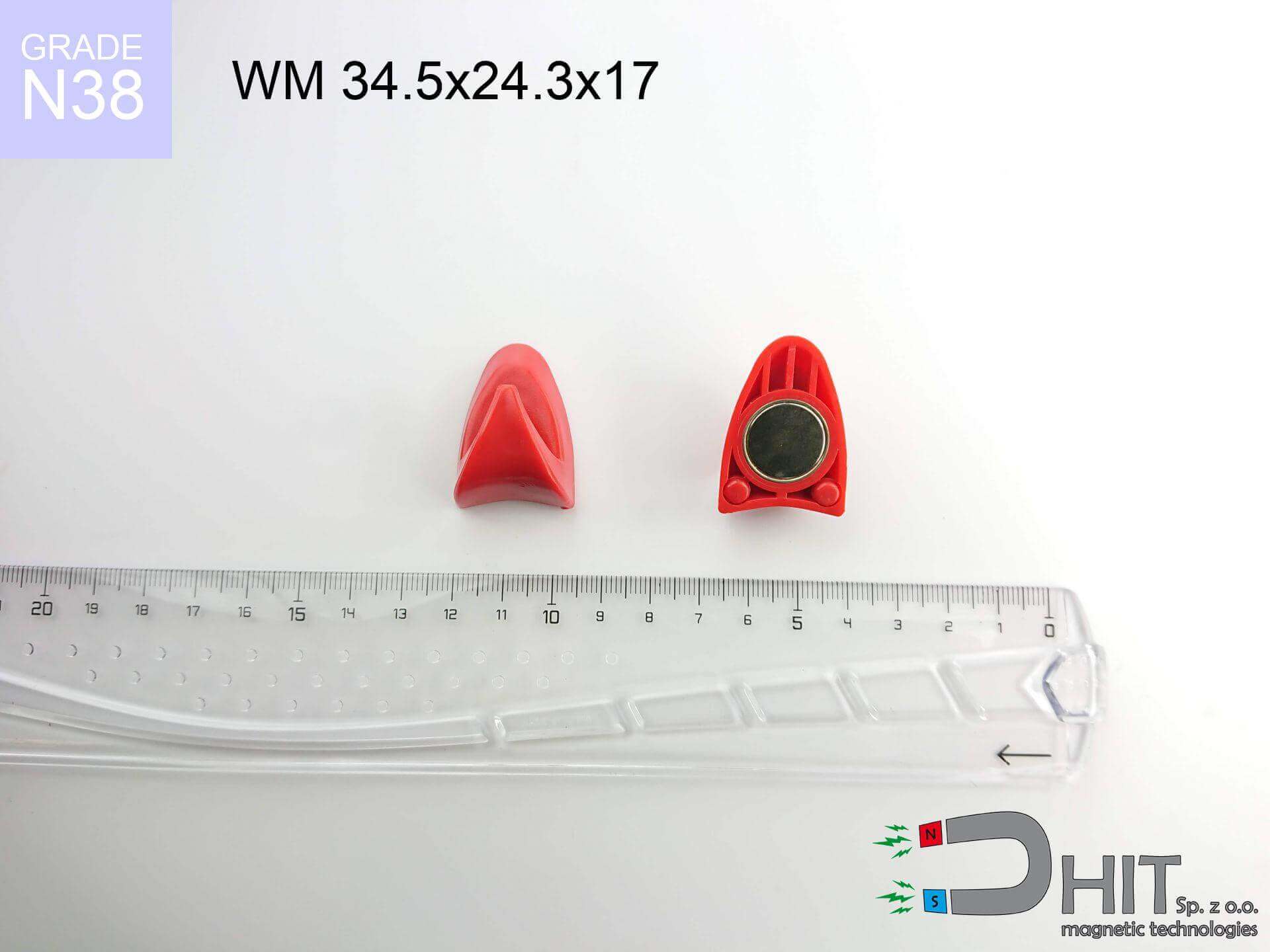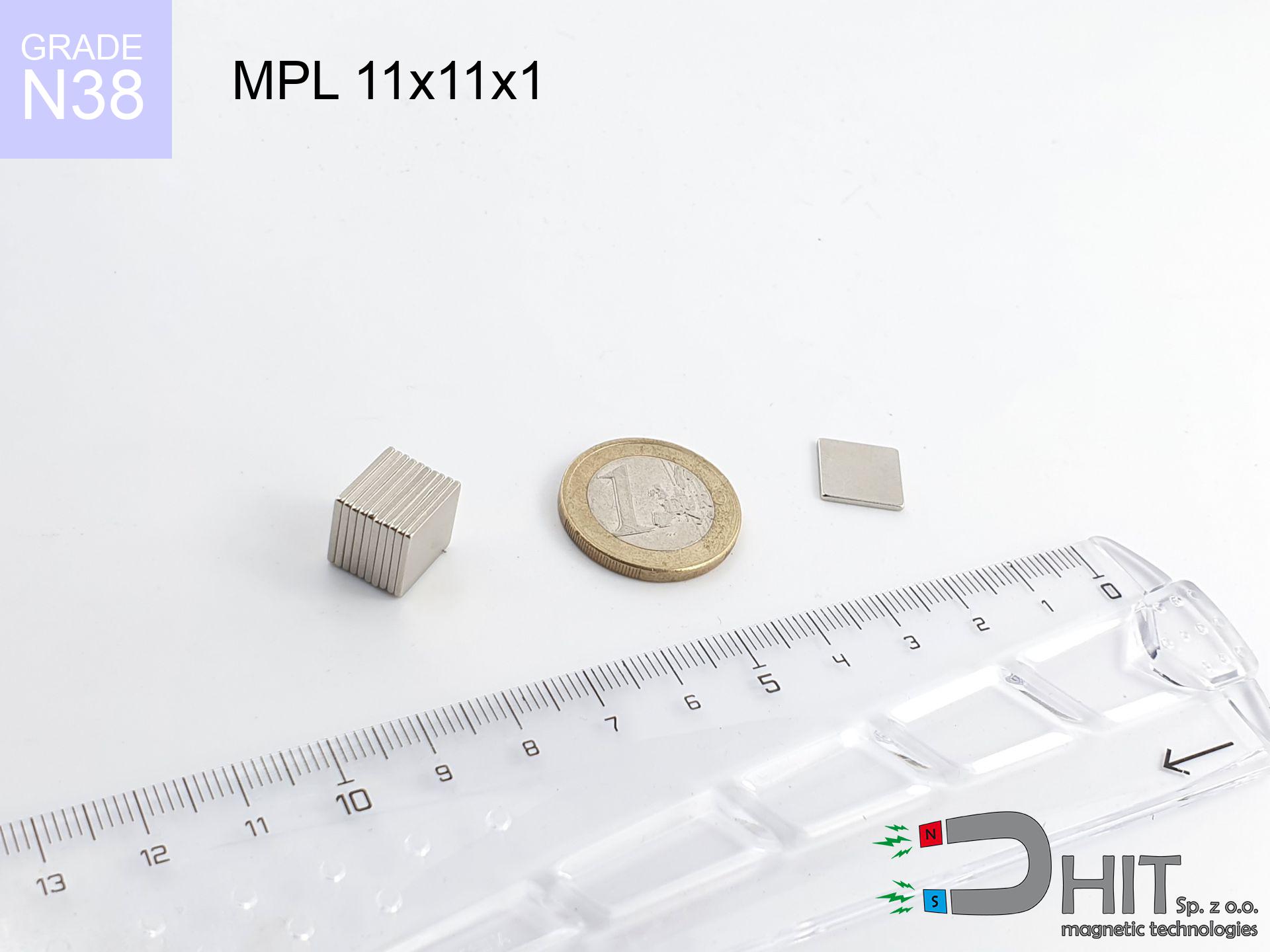UMP 75x25 [M10x3] GW F200 GOLD Lina / N42 - search holder
search holder
Catalog no 210433
GTIN: 5906301814085
Diameter Ø
75 mm [±1 mm]
Height
25 mm [±1 mm]
Weight
900 g
Load capacity
310 kg / 3040.06 N
Coating
[NiCuNi] Nickel
Magnetic Flux
~ 8 000 Gauss [±5%]
200.00 ZŁ with VAT / pcs + price for transport
162.60 ZŁ net + 23% VAT / pcs
bulk discounts:
Need more?Can't decide what to choose?
Pick up the phone and ask
+48 888 99 98 98
otherwise get in touch using
our online form
our website.
Strength and appearance of a magnet can be analyzed using our
our magnetic calculator.
Same-day shipping for orders placed before 14:00.
💡 Guide: How to choose a decent magnet and not get ripped off?
Instead of believing fairy tales on YouTube with tests on uncertified equipment, see what really determines your magnet's power:
- 📏 Magnet thickness in the casing (min. 10mm) – This is what matters most! Thin magnets are weak. Thanks to the 1cm thickness of N52 neodymium, your magnet "sees" metal even through thick rust and mud.
- 🛡️ Armored protection (Black Epoxy) – Forget about rust. This coating doesn't chip when hitting rocks and protects the magnet in water much better than regular nickel, which fails quickly.
- 🧲 Eyelets that don't steal power – Made of special non-magnetic steel, so they don't stick to the magnet and don't block the force. Important: mount only one eyelet at a time! Using 3 at once is a mistake that weakens the magnet.
- 🧶 Certified rope (min. 8mm) – You gain the certainty that your gear won't stay at the bottom. It's thick and comfortable, so it doesn't cut your fingers when pulling out heavy scrap metal.
- 🚀 Our advantage: We are the only ones combining the strongest N52 neodymium (10mm thick) with non-magnetic eyelets. This is real power and durability you won't find anywhere else.
Invest in solid equipment and enjoy the results!
UMP 75x25 [M10x3] GW F200 GOLD Lina / N42 - search holder
Specification / characteristics UMP 75x25 [M10x3] GW F200 GOLD Lina / N42 - search holder
| properties | values |
|---|---|
| Cat. no. | 210433 |
| GTIN | 5906301814085 |
| Production/Distribution | Dhit sp. z o.o. |
| Country of origin | Poland / China / Germany |
| Customs code | 85059029 |
| Diameter Ø | 75 mm [±1 mm] |
| Height | 25 mm [±1 mm] |
| Weight | 900 g |
| Load capacity ~ ? | 310 kg / 3040.06 N |
| Coating | [NiCuNi] Nickel |
| Series | GOLD |
| Holder Type | 2 sided |
| Material Type | Structural steel S235 (ferrous) |
| Magnetic Flux | ~ 8 000 Gauss [±5%] |
| Rope Length | 25 m |
| Rope Capacity | ~ 1595 kg |
| Rope Diameter | Ø 8 mm |
| Gloves | 1 pair |
| Size/Mount Quantity | 3xM10 |
| Manufacturing Tolerance | ±1 mm |
Magnetic properties of material N42
| properties | values | units |
|---|---|---|
| remenance Br [Min. - Max.] ? | 12.9-13.2 | kGs |
| remenance Br [Min. - Max.] ? | 1290-1320 | T |
| coercivity bHc ? | 10.8-12.0 | kOe |
| coercivity bHc ? | 860-955 | kA/m |
| actual internal force iHc | ≥ 12 | kOe |
| actual internal force iHc | ≥ 955 | kA/m |
| energy density [Min. - Max.] ? | 40-42 | BH max MGOe |
| energy density [Min. - Max.] ? | 318-334 | BH max KJ/m |
| max. temperature ? | ≤ 80 | °C |
Physical properties of sintered neodymium magnets Nd2Fe14B at 20°C
| properties | values | units |
|---|---|---|
| Vickers hardness | ≥550 | Hv |
| Density | ≥7.4 | g/cm3 |
| Curie Temperature TC | 312 - 380 | °C |
| Curie Temperature TF | 593 - 716 | °F |
| Specific resistance | 150 | μΩ⋅Cm |
| Bending strength | 250 | Mpa |
| Compressive strength | 1000~1100 | Mpa |
| Thermal expansion parallel (∥) to orientation (M) | (3-4) x 106 | °C-1 |
| Thermal expansion perpendicular (⊥) to orientation (M) | -(1-3) x 10-6 | °C-1 |
| Young's modulus | 1.7 x 104 | kg/mm² |
Other proposals
Pros as well as cons of NdFeB magnets.
Besides their magnetic performance, neodymium magnets are valued for these benefits:
- They have stable power, and over more than ten years their attraction force decreases symbolically – ~1% (according to theory),
- Neodymium magnets are exceptionally resistant to loss of magnetic properties caused by external field sources,
- A magnet with a metallic silver surface has an effective appearance,
- They show high magnetic induction at the operating surface, which improves attraction properties,
- Through (appropriate) combination of ingredients, they can achieve high thermal strength, allowing for functioning at temperatures approaching 230°C and above...
- Possibility of individual machining as well as adapting to concrete needs,
- Significant place in advanced technology sectors – they are used in computer drives, brushless drives, medical devices, also other advanced devices.
- Thanks to their power density, small magnets offer high operating force, occupying minimum space,
Cons of neodymium magnets: tips and applications.
- At very strong impacts they can crack, therefore we recommend placing them in steel cases. A metal housing provides additional protection against damage and increases the magnet's durability.
- Neodymium magnets lose their strength under the influence of heating. As soon as 80°C is exceeded, many of them start losing their power. Therefore, we recommend our special magnets marked [AH], which maintain durability even at temperatures up to 230°C
- They rust in a humid environment - during use outdoors we advise using waterproof magnets e.g. in rubber, plastic
- We recommend casing - magnetic mechanism, due to difficulties in producing nuts inside the magnet and complicated forms.
- Potential hazard resulting from small fragments of magnets can be dangerous, when accidentally swallowed, which is particularly important in the context of child health protection. It is also worth noting that tiny parts of these magnets are able to complicate diagnosis medical in case of swallowing.
- With large orders the cost of neodymium magnets is a challenge,
Maximum lifting capacity of the magnet – what it depends on?
The declared magnet strength represents the peak performance, obtained under ideal test conditions, namely:
- with the application of a yoke made of special test steel, guaranteeing full magnetic saturation
- whose transverse dimension reaches at least 10 mm
- with a surface cleaned and smooth
- with zero gap (no coatings)
- under perpendicular application of breakaway force (90-degree angle)
- at ambient temperature approx. 20 degrees Celsius
Practical aspects of lifting capacity – factors
In practice, the actual holding force is determined by many variables, presented from crucial:
- Gap (between the magnet and the plate), because even a tiny distance (e.g. 0.5 mm) leads to a reduction in force by up to 50% (this also applies to varnish, corrosion or dirt).
- Loading method – catalog parameter refers to detachment vertically. When slipping, the magnet exhibits much less (often approx. 20-30% of maximum force).
- Element thickness – for full efficiency, the steel must be sufficiently thick. Thin sheet limits the lifting capacity (the magnet "punches through" it).
- Material type – ideal substrate is high-permeability steel. Hardened steels may attract less.
- Smoothness – full contact is possible only on smooth steel. Any scratches and bumps reduce the real contact area, reducing force.
- Thermal factor – high temperature reduces pulling force. Too high temperature can permanently damage the magnet.
* Holding force was checked on the plate surface of 20 mm thickness, when a perpendicular force was applied, in contrast under attempts to slide the magnet the load capacity is reduced by as much as fivefold. In addition, even a small distance {between} the magnet’s surface and the plate lowers the lifting capacity.
Safe handling of NdFeB magnets
Caution required
Handle magnets consciously. Their huge power can shock even experienced users. Be vigilant and respect their power.
Adults only
These products are not suitable for play. Eating a few magnets can lead to them attracting across intestines, which constitutes a critical condition and necessitates immediate surgery.
Machining danger
Powder produced during grinding of magnets is self-igniting. Do not drill into magnets without proper cooling and knowledge.
Avoid contact if allergic
Nickel alert: The Ni-Cu-Ni coating contains nickel. If an allergic reaction appears, immediately stop working with magnets and wear gloves.
Beware of splinters
Watch out for shards. Magnets can explode upon violent connection, ejecting shards into the air. We recommend safety glasses.
Finger safety
Large magnets can crush fingers instantly. Under no circumstances place your hand between two attracting surfaces.
Impact on smartphones
Navigation devices and smartphones are extremely sensitive to magnetic fields. Direct contact with a powerful NdFeB magnet can ruin the sensors in your phone.
Danger to pacemakers
Life threat: Strong magnets can turn off pacemakers and defibrillators. Do not approach if you have electronic implants.
Operating temperature
Watch the temperature. Exposing the magnet to high heat will permanently weaken its properties and strength.
Data carriers
Equipment safety: Strong magnets can damage data carriers and sensitive devices (pacemakers, medical aids, timepieces).
Danger!
Learn more about hazards in the article: Safety of working with magnets.

![Fishing magnet UMP 75x25 [M10x3] GW F200 GOLD Lina / N42 - GOLD Series Fishing magnet UMP 75x25 [M10x3] GW F200 GOLD Lina / N42 - GOLD Series](https://cdn3.dhit.pl/graphics/banners/magnet.webp)
![UMP 75x25 [M10x3] GW F200 GOLD Lina / N42 - search holder](https://cdn3.dhit.pl/graphics/products/ump-75x25-m10x3-gw-f200-gold-lina-buh.jpg)
![UMP 94x40 [3xM10] GW F550 Silver Black / N52 - search holder UMP 94x40 [3xM10] GW F550 Silver Black / N52 - search holder](https://cdn3.dhit.pl/graphics/products/ump-94x40-3xm10-gw-f550-fad.jpg)

![UMGZ 60x30x15 [M10] GZ / N38 - magnetic holder external thread UMGZ 60x30x15 [M10] GZ / N38 - magnetic holder external thread](https://cdn3.dhit.pl/graphics/products/umgw-60x30x15-m10-gz-bas.jpg)


